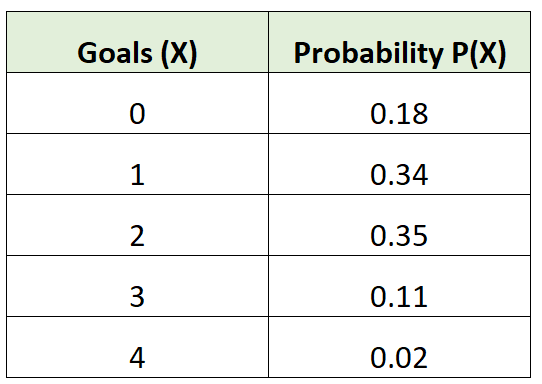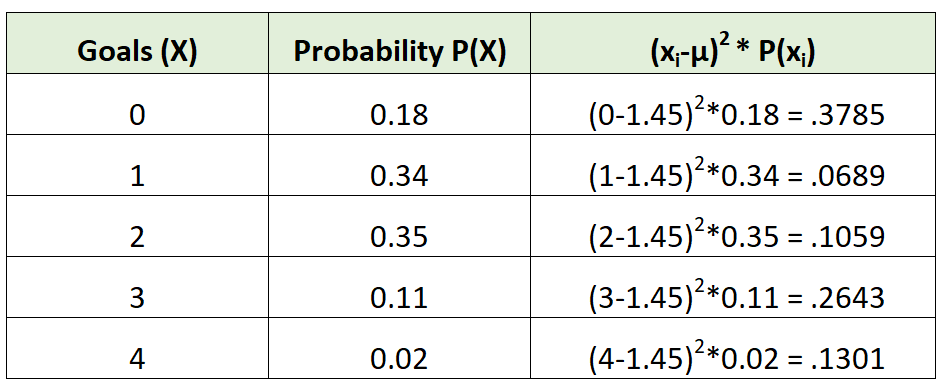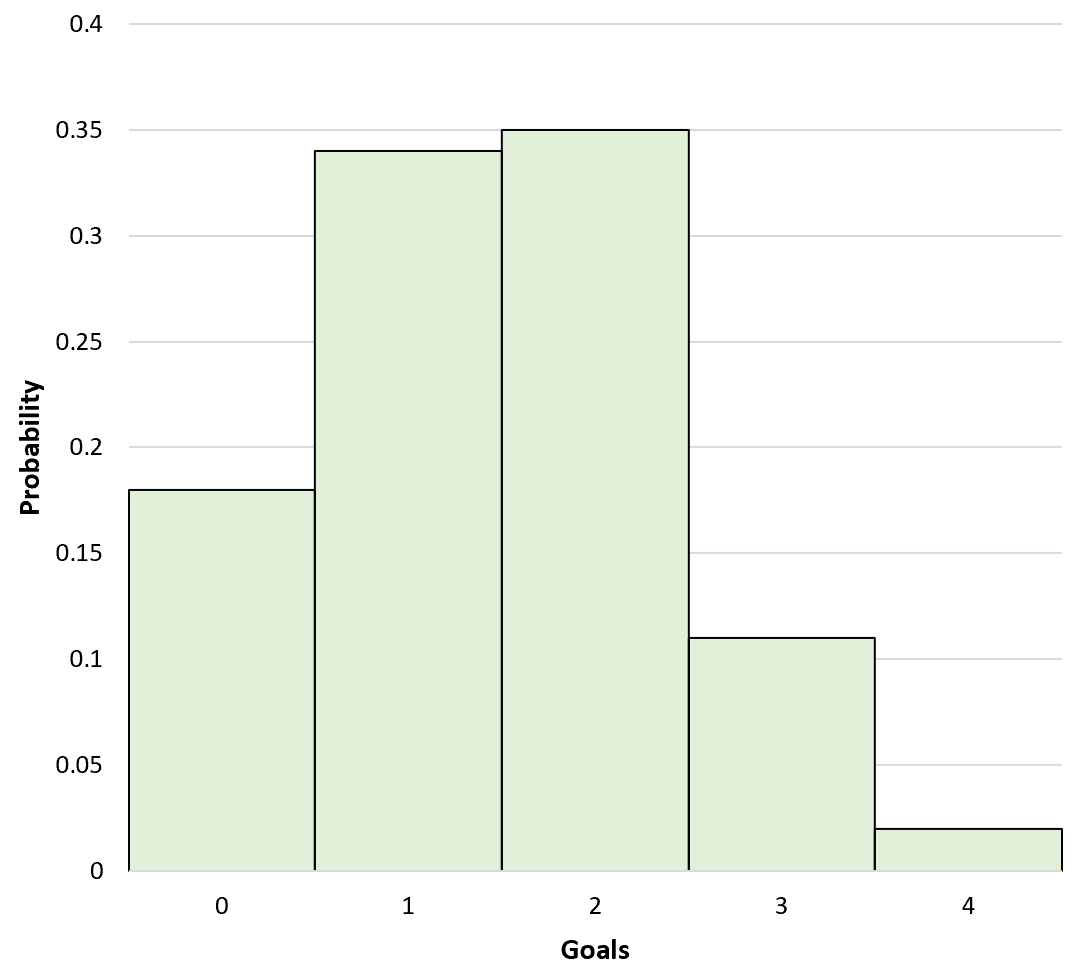A probability distribution table is a table that displays the probability that a random variable takes on certain values.
For example, the following probability distribution table tells us the probability that a certain soccer team scores a certain number of goals in a given game:

The left-hand column shows the number of goals and the right-hand column tells us the probability that the team will score this number of goals.
For example:
- The probability that the team scores exactly 0 goals is 0.18.
- The probability that the team scores exactly 1 goal is 0.34.
- The probability that the team scores exactly 2 goals is 0.35.
And so on.
Properties of a Probability Distribution Table
A probability distribution table has the following properties:
1. All probabilities must add up to 1.
For a probability distribution table to be valid, all of the individual probabilities must add up to 1. We can verify that the previous probability distribution table is valid:
Sum of probabilities = 0.18 + 0.34 + 0.35 + 0.11 + 0.02 = 1.
2. The mean can be calculated.
The formula to calculate the mean of a given probability distribution table is:
μ = Σx * P(x)
where:
- x: Data value
- P(x): Probability of value
For example, consider our probability distribution table for the soccer team:

The mean number of goals for the soccer team would be calculated as:
μ = 0*0.18 + 1*0.34 + 2*0.35 + 3*0.11 + 4*0.02 = 1.45 goals.
3. The standard deviation can be calculated.
The formula to calculate the standard deviation of a given probability distribution table is:
σ = √Σ(xi-μ)2 * P(xi)
where:
- xi: The ith value
- μ: The mean of the distribution
- P(xi): The probability of the ith value
For example, here’s how to calculate the standard deviation of goals scored by the soccer team:

The standard deviation is the square root of the sum of the values in the third column:
Standard deviation = √(.3785 + .0689 + .1059 + .2643 + .1301) = 0.9734
How to Visualize a Probability Distribution Table
The easiest way to visualize the values in a probability distribution table is by using a histogram, which displays the values of the random variable along the x-axis and the probability of those values along the y-axis:

This lets us quickly visualize the probability values from the table.
In particular, we can see that there is a high probability that the team scores 2 goals or less while there is a tiny probability that the team scores as many as 4 goals.
Additional Resources
Probability Distribution Calculator
How to Find the Mean of a Probability Distribution
How to Find the Standard Deviation of a Probability Distribution